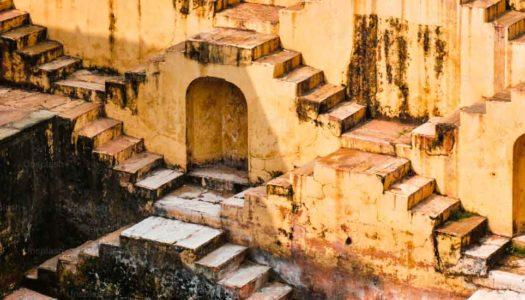Stambheshwar Mahadev Temple is one of the most unique shrines dedicated to Lord Shiva in India. The temple is almost 150 years old and there are several stories associated with the place. You will also hear people calling this the ‘Gayab Mandir’ or the ‘disappearing temple’ because it conceals itself from the public eye twice a day! What’s the reason behind this? Why is the temple playing hide and seek with its devotees?
Read on to find out all the information about the history of the temple, the significance of the place in Hinduism, its accessibility, architecture and the best time to visit the place.
The Disappearance of Stambheshwar Mahadev Temple
The Stambheshwar Mahadev Temple disappears twice a day and these are the times when the devotees won’t be able to set foot in the sanctum sanctorum. To understand this, we need to know where the temple is located.
Stambheshwar Mahadev Temple is located in Kavi Kamboi of Gujarat, a place that is about 70kms away from Vadodara. The shrine is present a few feet away from the seashore and is in the Arabian Sea. The high tides arrive twice during the day and this is when the temple gets completely submerged below water. Recently, the authorities of the state have constructed a pinnacle at the top which is the only part that remains visible during the high tide. When the low tides replace the high tides, devotees go to the temple, offer their prayers and come back. The flowers offered during the low tide wash to shore during the hide tide, making the sandy sea line a colourful spectacle to behold.
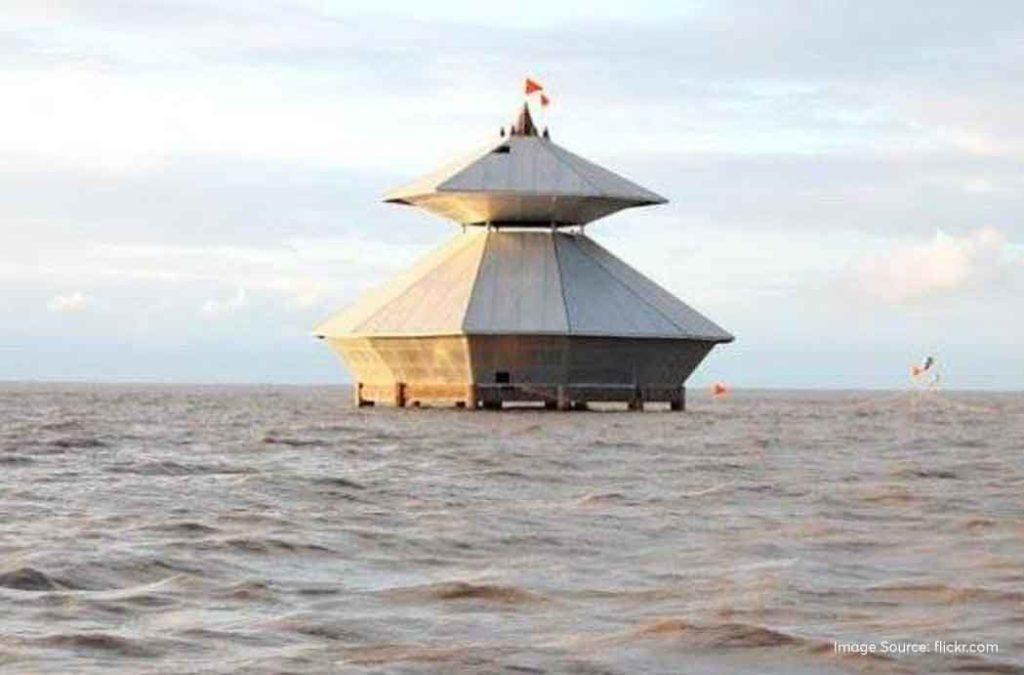
The transition from low tides to high tides is so spectacular! It seems like the water itself is offering its prayers to the 4-foot-long Shiva Linga that you will find in the temple.
There are more such mysterious and unique temples in India. The Kamakhya Temple in Assam is another such place where the Goddess in the sanctum sanctorum bleeds for three days every year! The Ambubachi Mela is celebrated on this occasion.
History of Stambheshwar Mahadev Temple
The temple structure that you see today is almost 150 years old. However, the Shiva Linga was there for thousands of years. There are two stories associated with how the temple came to be and who placed the Shiva Linga in the location.
Legends say that the Pandava brothers of Mahabharata were the ones who placed the Shiva Linga in the location and offered their prayers to Lord Shiva during their exile. Another story is that of Lord Karthikeya.
Tarakasura was a demon and an ardent devotee of Lord Shiva. He indulged in a stringent penance or tapasya to gain the attention of Lord Brahma. The deity finally appeared in front of the demon, very impressed with his dedication. He told Tarakasura that he’d grant him a boon, whatever the demon wanted. Tarakusara instantly asked Lord Brahma to make him immortal and that death should never touch him. However, the cycle of life and death is inevitable and Lord Brahma couldn’t grant such a boon. He asked Tarakasura to ask for something else. However, the cunning demon asked Lord Brahma to bless him so that death would not knock at his doorstep and the only way he could die was when Lord Shiva’s son killed him.
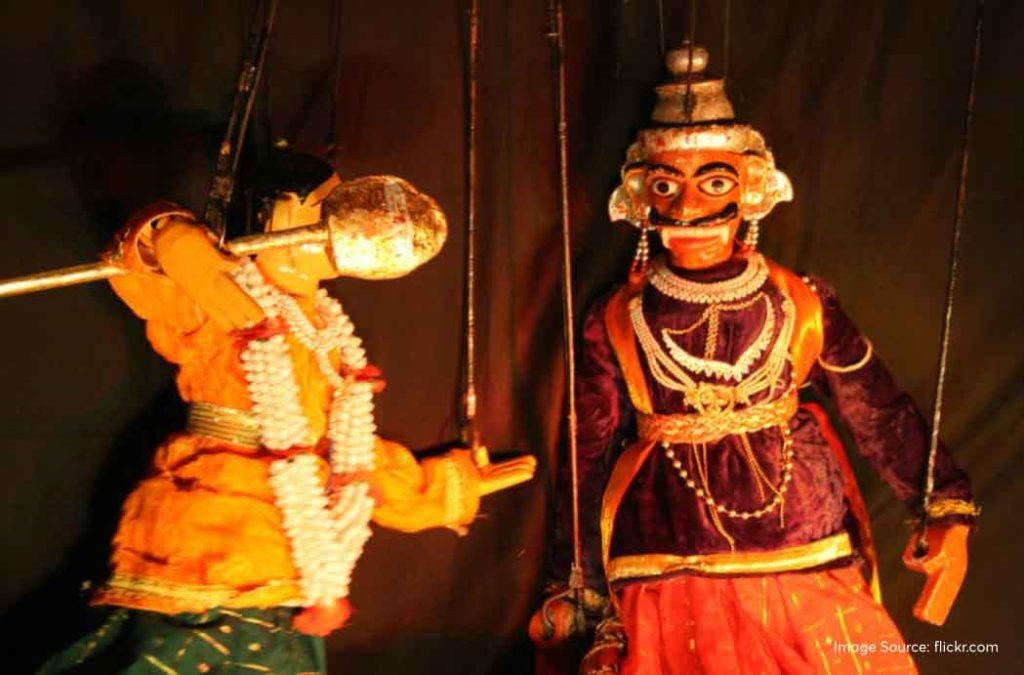
This was the time when Lord Shiva was in a deep meditative state after the death of his wife, Sati. Tarakasura knew that the deity wouldn’t harbour any children. Lord Brahma granted him the boon. Within no time, Tarakasura started spreading havoc in the heavens. He mercilessly killed deities, terrorised the Gods and also started making the lives of humans difficult.
Goddess Parvati, the reincarnation of Sati, sat down in a deep meditative state to earn the love and affection of Lord Shiva. The Lord was greatly impressed with her devotion and both eventually married. Their union resulted in the birth of Lord Karthikeya.
When Karthikeya was 6 years old, he led the army of Gods and defeated Tarakasura. To absolve the sin of killing Lord Shiva’s devotee, he established Shiva Lingas in multiple locations on Earth and offered his prayers. Stambheshwar Mahadev Temple is said to be one such Shiva Linga.
If you are keen on exploring the famous Shiva Lingas in India, we suggest that you complete the journey around the 12 Jyotirlingas of Lord Shiva which are believed to be the most powerful abodes of the three-eyed God.
Significance of Stambheshwar Mahadev Temple
The temple has a unique mystical aura that attracts tourists and devotees from across the globe. The phenomenon of disappearance and reappearance also signifies the cycle of life and death.
The temple and the Shiva Linga emerge when the low tides take over. This signifies birth. While the temple remains above the sea level, devotees come to offer their prayers. The temple serves its purpose just like human beings have to fulfil their ‘Karma’ on Earth. Again when the high tides replace the low tides, the temple disappears. This signifies death. After serving the divine purpose, death is the end that will take you to another beginning or show the path to eternal moksha or salvation.
The temple is also deeply associated with Lord Karthikeya. It is said that those who are struggling with conflicts should visit the temple and they would certainly find the right solutions to their problems, just like Lord Karthikeya was able to deal with the problem of Tarakasura.
It won’t be wrong to say that Stambheshwar Mahadev Temple is one of the main epicentres for spiritual traditions and Hinduism.
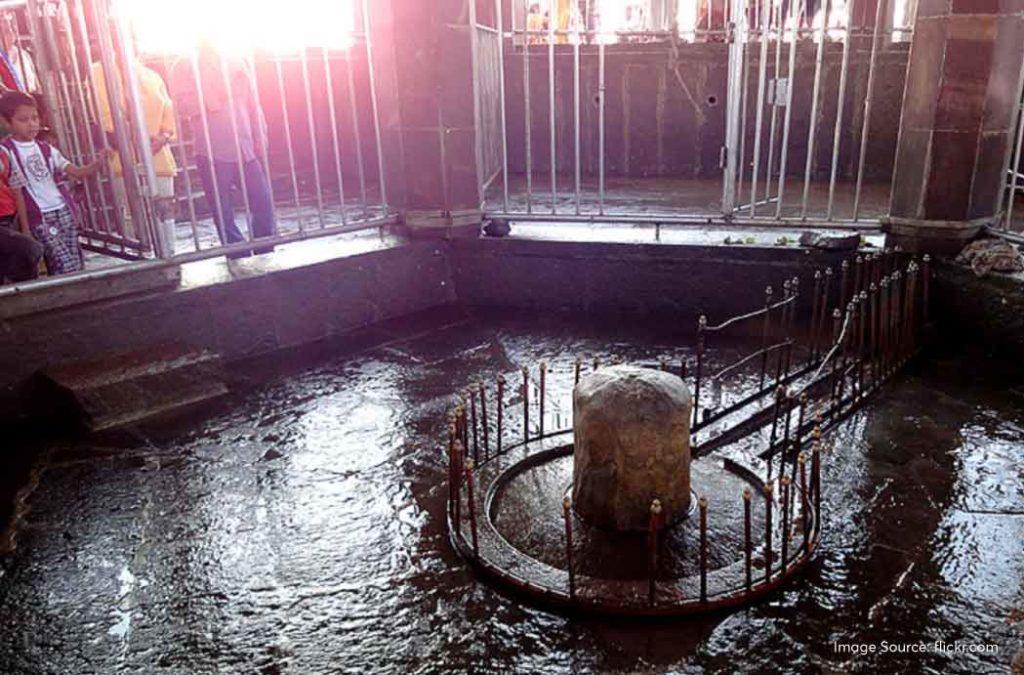
Accessibility to the temple
There are no fixed timings for visiting the temple. The tides determine when you will be able to reach the temple to offer your prayers. The people of Gujarat follow the Lunar calendar and analyze the tide pattern during the lunar fortnight seeing how the moon is responsible for the pull of the tides. Depending on that, they provide approximate timings when it is safe to visit the temple. These are the darshan timings during different days of the lunar fortnight.
| Date | Session 1 – Darshan Time | Session 2 – Darshan Time |
| Ekam – 1st day after New Moon Day or Full Moon Day | 9:15 AM to 3:45 PM | 9:15 PM to 3:45 AM |
| Bij | 10:30 AM to 4:30 PM | 10:30 PM to 4:30 AM |
| Trij | 11:15 AM to 5:15 PM | 11:15 PM to 5:15 AM |
| Chouth | 12:00 PM to 6.00 PM | 12:00 AM to 6:00 AM |
| Pancham | Sunrise to 7:00 AM | 1:00 PM to 4:00 PM |
| Chath | Sunrise to 7:45 AM | 1:15 PM to 7:15 PM |
| Satam | Sunrise to 8:00 AM | 2:30 PM to 8:30 PM |
| Aatham | Sunrise to 9:45 AM | 3:15 PM to 9:15 PM |
| Naum | Sunrise to 10:00 AM | 4:00 PM to 10:00 PM |
| Dasham | Sunrise to 10:45 AM | 4:45 PM to 10:45 PM |
| Agiyaras | 5:30 AM to 11:30 AM | 5:30 PM to 11:30 PM |
| Baras | 6:30 AM to 12:30 PM | 6:30 PM to Midnight 12:30 AM |
| Teras | 7:15 AM to 1.15 PM | 7:15 PM to Midnight 1:15 AM |
| Choudash | 8:00 AM to 2.00 PM | 8:00 PM to Midnight 2:00 AM |
| Poonam – Amavasya (New Moon Day or Full Moon Day) | 9:00 AM to 3.00 PM | 9:00 PM |
Architecture of the temple
The temple gets its name because it is built on ‘Stambh’ or ‘pillars. There are four pillars that form the main foundation of the building. In the centre of the temple is the sanctum sanctorum which has the 4-feet Shiva Linga. There is space around the Shiva Linga where devotees can stand and pray. There is a long path lined by a stone railing on either side. It leads devotees from the sandy shore to the temple. The entire temple has the same stone fencing.
The pillars and outer railing of the temple are built in such a way that they can endure the saline environment of the seawater. Irrespective of the seasons, these foundations can tolerate constant exposure to seawater and remain uncorroded and intact.
There are steps that will lead you to the main Garbagriha or sanctum santorum. These are not many so people who are older in age can also easily descend and ascend them. The steps are non-slippery and do not accumulate algae easily. This is very helpful, especially seeing how devotees are more likely to enter the space with wet feet.
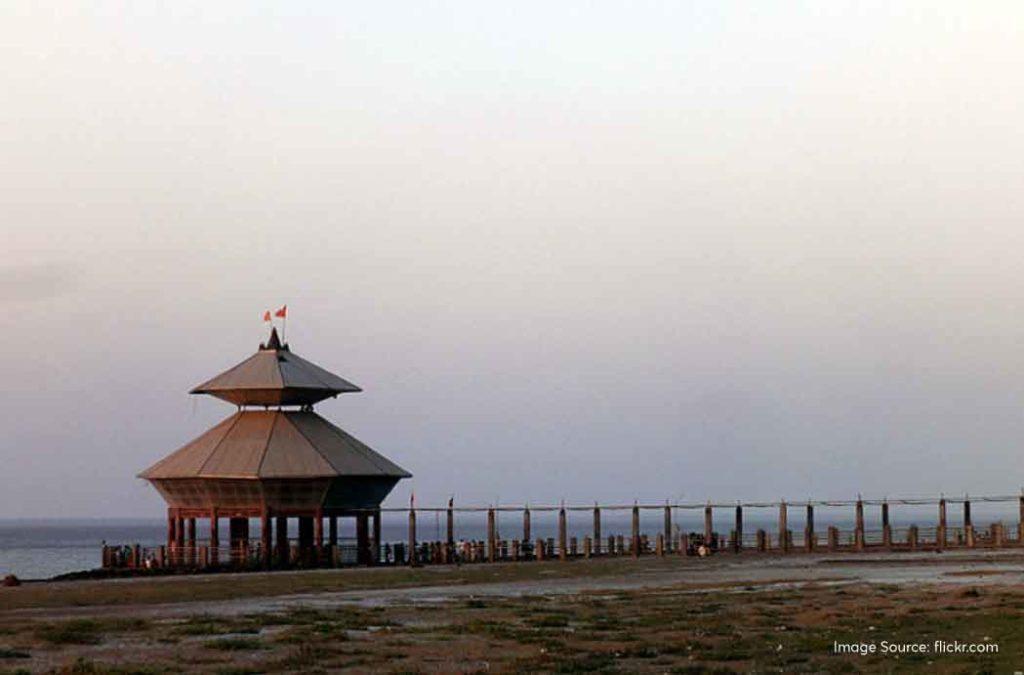
The temple has a very efficient drainage system. After the high tides, the water easily leaves and doesn’t accumulate.
The pinnacle of the temple is sloped towards the sea so that when the waves splash on it, the water can easily fall back into the ocean. At the top peak of the pinnacle, you will see one big spire surrounded by smaller spires. A flag is lodged just beside the spires and it keeps flying in the direction of the wind.
Unlike the elaborate Dravidian style and eye-sparkling opulence of the richest temples of India, Stambheshwar Mahadev Temple is built in a simple and subtle manner, keeping the nature of the tides in mind.
Best time to visit Stambheshwar Mahadev Temple
You can visit Stambheshwar Mahadev Temple anytime during the year. People come here in great numbers during the Mahashivratri. However, you need to keep two factors in mind before you make the trip – weather and tides.
You can refer to the darshan timings that we have mentioned earlier in the article. Accordingly, you can choose to seek blessings from the Lord at the specified time. But, it would be safe to say that the best time to visit the temple is between 2:00 PM to 3:00 PM seeing how on most days the tides remain low during that time.
From October to March, the region experiences the cold winters. The weather is more or less pleasant during this time and the sun won’t be as scorching hot as in the summer months from April to June. Winters are the best time to explore the temple and also spend some quality time on the beach.
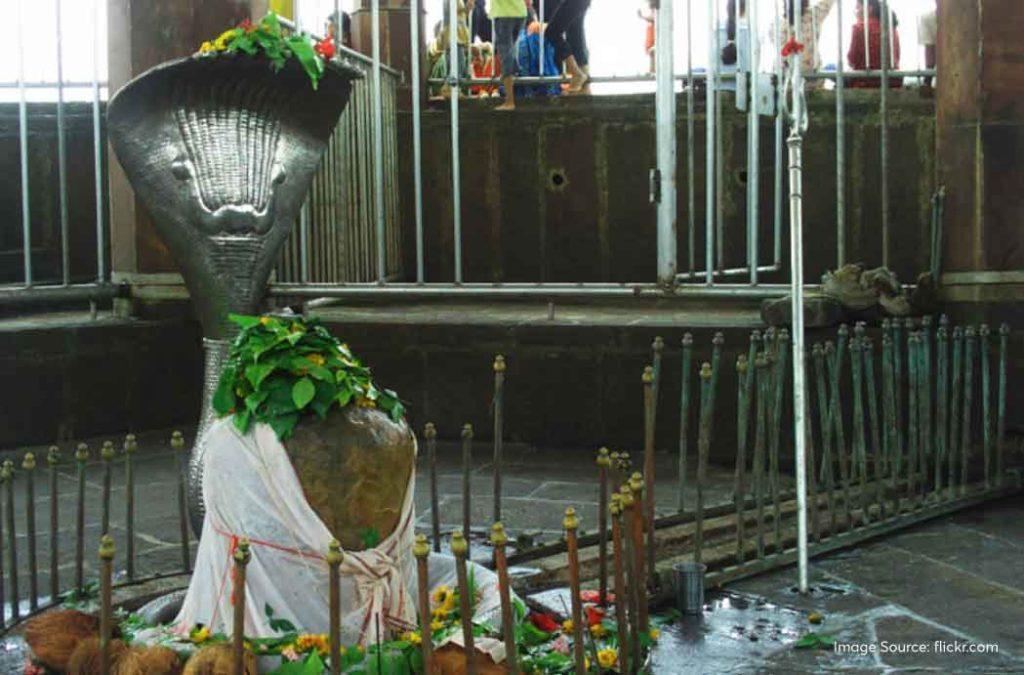
July to September is the rainy season. Around July, you will find that the region is hit by very heavy rains owing to the proximity to the sea. Well, there will be accessibility difficulties because of the rip tides but the sight of the temple and how the waves splash against it is worth seeing!
When the Shravan month begins in July-August, the number of devotees visiting the temple will increase significantly.
If you are fascinated with the mysterious temples of India, you must definitely learn about the guarded secrets of Anantha Padmanabhaswamy temple in Thiruvananthapuram.
How to Reach Stambheshwar Mahadev Temple?
Stambheshwar Mahadev Temple is located in Kavi Kamboi village of Gujarat. You can reach the place by taking a flight, through railways or even embark on a road trip.
By Air
You can either take a flight to the Vadodara airport or deboard at Sardar Vallabhbhai Patel airport in Ahmedabad. From Vadodara, the temple is 80 kms away and from Ahmedabad, it is around 150 kms away. You will find taxis/cabs and public buses that will take you to Kavi Kamboi.
By Rail
You can get down at the Vadodara Junction and then take a private taxi or use public transport to reach the temple. It takes about 2.5 hours to cover the roughly 80 kms distance.
By Road
People must reach either Vadodara or Bharuch first and then travel toward Kavi Kamboi. From Vadodara, you will be taking NH48 to reach Jambusar and then take SH6 to reach Kavi Kamboi. The roads to Jambusar are smooth but from there, you will have to tackle with occasional obstacles and potholes.
Book your hotels in Vadodara, relax for a bit and then head towards Stambheshwar Mahadev Temple. The place will definitely soothe your body and mind!
You’ve been to the temple before? Then tell us all about it in the comments section.









